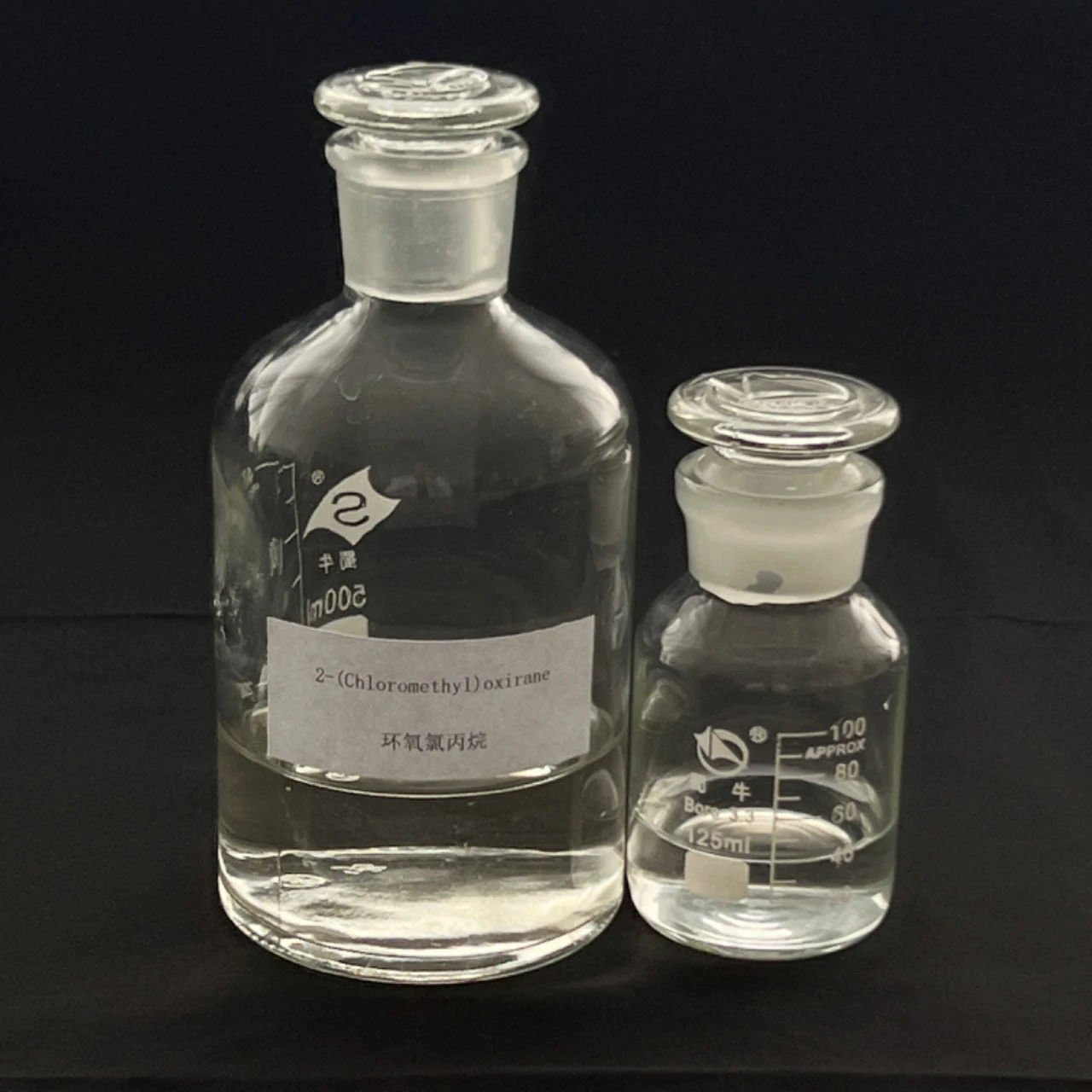The concentration of 2-(chloromethyl)oxirane, also known as epichlorohydrin, can significantly affect reaction outcomes in various chemical processes.
Here are several ways in which concentration influences reaction outcomes:
- Reaction Rate: In general, increasing the concentration of epichlorohydrin typically leads to higher reaction rates. This is because a higher concentration of reactant molecules increases the frequency of collisions between reactants, thereby accelerating the rate of the reaction. Reaction rates are often proportional to the concentrations of the reactants raised to some power, as described by rate laws or rate equations.
- Product Distribution: The concentration of epichlorohydrin can affect the distribution of products in multi-step reactions or reactions involving multiple competing pathways. Higher concentrations of epichlorohydrin may favor the formation of certain products due to kinetic factors, such as the relative rates of competing reactions or the stability of intermediates.
- Solvent Effects: The concentration of epichlorohydrin relative to the concentration of solvent can influence reaction outcomes in solvent-mediated processes. For example, in reactions conducted in dilute solutions, solvent molecules may compete with epichlorohydrin for reaction with other reagents, leading to changes in reaction kinetics or selectivity.
- Safety Considerations: Concentrated solutions of epichlorohydrin pose safety hazards due to their corrosive and toxic nature. Handling and manipulating concentrated solutions require appropriate safety precautions to prevent exposure and minimize risks of accidents or adverse health effects.
- Phase Behavior: In reactions involving multiple phases (e.g., liquid-liquid or liquid-solid reactions), the concentration of epichlorohydrin can affect the phase behavior and distribution of reactants and products. Changes in concentration may influence phase equilibria, solubility, 2-(Chloromethyl)oxirane supplier or mass transfer rates, impacting overall reaction outcomes.
- Temperature Effects: Concentration can indirectly influence reaction outcomes by affecting reaction temperatures. For exothermic reactions, higher concentrations of epichlorohydrin may lead to higher reaction temperatures due to increased heat release, potentially influencing reaction rates, selectivity, and product distribution.
Overall, the concentration of 2-(chloromethyl)oxirane plays a crucial role in determining reaction outcomes by influencing reaction kinetics, product distribution, solvent effects, safety considerations, phase behavior, and temperature effects. Optimization of reaction conditions, including epichlorohydrin concentration, is essential for achieving desired reaction outcomes in various chemical processes.
How does the presence of additives affect chemical 2-(Chloromethyl)oxirane’s performance in reactions?
The presence of additives can significantly affect the performance of 2-(chloromethyl)oxirane, also known as epichlorohydrin, in reactions. Additives are auxiliary substances added to a reaction mixture to modify reaction kinetics, improve selectivity, enhance product yield, or provide other desirable effects. Here’s how the presence of additives can impact epichlorohydrin’s performance in reactions:
- Catalytic Activity: Additives can serve as catalysts, promoting the activation of epichlorohydrin and facilitating desired chemical transformations. Catalysts can accelerate reaction rates, lower activation energies, or modify reaction pathways, leading to improved efficiency and selectivity in reactions involving epichlorohydrin.
- Functional Group Compatibility: Additives with specific functional groups or reactive moieties can selectively interact with epichlorohydrin or other reactants, facilitating specific bond formation or cleavage reactions. Functional group compatibility between additives and reaction substrates can influence reaction outcomes, product distribution, and reaction selectivity.
- Solvent Effects: Additives can influence solvent properties, such as polarity, viscosity, or boiling point, which in turn affect reaction kinetics and solubility of reactants and products. The choice of solvent and additives can impact reaction rates, yield, and selectivity in reactions involving epichlorohydrin.
- Phase Transfer Catalysis: Additives can act as phase transfer catalysts, facilitating the transfer of reactants between immiscible phases or promoting reactions at phase interfaces. Phase transfer catalysis can enhance reaction rates, improve yield, chemical 2-(Chloromethyl)oxirane and enable reactions that would otherwise be inaccessible due to solubility or compatibility issues.
- Stabilization and Inhibition: Additives can stabilize reactive intermediates, prevent side reactions, or inhibit unwanted reactions in reaction mixtures containing epichlorohydrin. Stabilizing agents or inhibitors can enhance reaction selectivity, increase product yield, and improve the overall efficiency of chemical processes.
- Regio- and Stereoselectivity: Additives can influence regio- and stereoselectivity in reactions involving epichlorohydrin by selectively interacting with reactive sites or modifying reaction conditions. Additive-induced changes in reaction environment or substrate orientation can lead to controlled regio- and stereoselective transformations, yielding desired products with high selectivity.
Overall, the presence of additives can have a profound impact on the performance of epichlorohydrin in chemical reactions, influencing reaction kinetics, selectivity, solubility, phase behavior, and overall efficiency. Careful selection and optimization of additives are essential for achieving desired reaction outcomes and enhancing the utility of epichlorohydrin in various synthetic applications.

